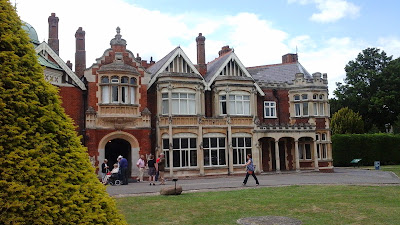The American Library Association (ALA) has a toolkit to help guide US libraries in providing services to people experiencing homelessness, and I attended a webinar called "Understanding and Serving People Experiencing Homelessness: A Trauma-Informed Approach to Library Service" hosted by the Public Library Association (PLA) in June.
Image from: http://www.ala.org/offices/extending-our-reach-reducing-homelessness-through-library-engagement
As part of my research, I wanted to learn what resources or guidance (if any) library organizations provide in the UK. So, I contacted the Public and Mobile Library Group (PMLG) of the Chartered Institute of Library and Information Professionals (CILIP) and the Association of London Chief Librarians (ASCL), the regional subgroup of the Society of Chief Librarians.
Public and Mobile Library Group (PMLG)
According to its website, the PMLG has provided "expert advice" on "working with the homeless in public libraries." I contacted Dianne Hird, the Honorary Secretary of the PMLG, to see what kind of advice they've given and what kind of resources or guidance they provide to public libraries on this subject in the UK.
I need to pause here and say: I love how enthusiastic librarians are about sharing information. I've been in my LIS program for a year and a half now, and I'm still surprised by and grateful for the generous responses I've received whenever I approach a librarian for help with an assignment. Dianne not only responded promptly to my query, she forwarded my questions to two other committee members and forwarded their responses to me. It's experiences like these that encourage me to continue working toward this new career.
Unlike the ALA in the US, the PMLG/CILIP doesn't have any formal policies or guidelines on services to the homelessness. The advice referred to on the website was verbal and was related to mobile libraries for the homeless.
While there isn't a UK-wide policy or strategy on working with homeless people, the PMLG committee members pointed out a number of helpful things that many libraries do, such as:
- Relaxing membership rules for people with no fixed address
- Providing free computer access
- Providing access, shelter, and toilets while the building is open
- Introduce specific projects around IT training and reading
- Engaging in partnerships with organizations dealing with homelessness
- Offering reading groups for homeless people
- Providing mental health information
- Signposting to local homelessness organizations, shelters, and council services
Association of London Chief Librarians (ALCL)
The current Chair of the ALCL is Carol Boswarthack, who is also the Chief Librarian at the Barbican Library. She spoke with us briefly yet enthusiastically about public library service during our tour of the Barbican Library, so I looked forward to seeing what she had to say about ALCL's guidance on public library service to the homeless.
Neither the ALCL nor its parent organization, the Society of Chief Librarians, offers formal guidance or makes policy in this regard. Every library is different and serves a unique customer base
with varying levels of need based on their locations. Each library has its own "program of work" specifically designed to fit the needs of its own
community. If anything, members of the ALCL ask questions and share information with fellow chief librarians in the group (e.g., How do you deal with…? Do any of you have a
local policy on…?). Carol noted that this is incredibly helpful when you are trying to formulate
your own local policies.
Carol explained that, in the UK, homelessness/helping homeless people is considered the responsibility of local government. I encountered this idea in all of my public library visits. Whenever I asked about library services to the homeless, I was met with an expression of confusion and an explanation that other organizations take care of that sort of thing. The primary service the libraries I visited provide is referrals to other government agencies and outside organizations.
Carol explained that, in the UK, homelessness/helping homeless people is considered the responsibility of local government. I encountered this idea in all of my public library visits. Whenever I asked about library services to the homeless, I was met with an expression of confusion and an explanation that other organizations take care of that sort of thing. The primary service the libraries I visited provide is referrals to other government agencies and outside organizations.
Carol also referred me to The Network, which is a network of many different bodies, including libraries, museums, and archives, that share information and best practices through newsletters, e-bulletins, and e-mail discussion lists. The Network "responds to Government and other calls for information about the social justice role of the cultural sector; and organises and takes part in courses, seminars and conferences." I will definitely check it out.
See what I mean about the generosity of librarians?







































